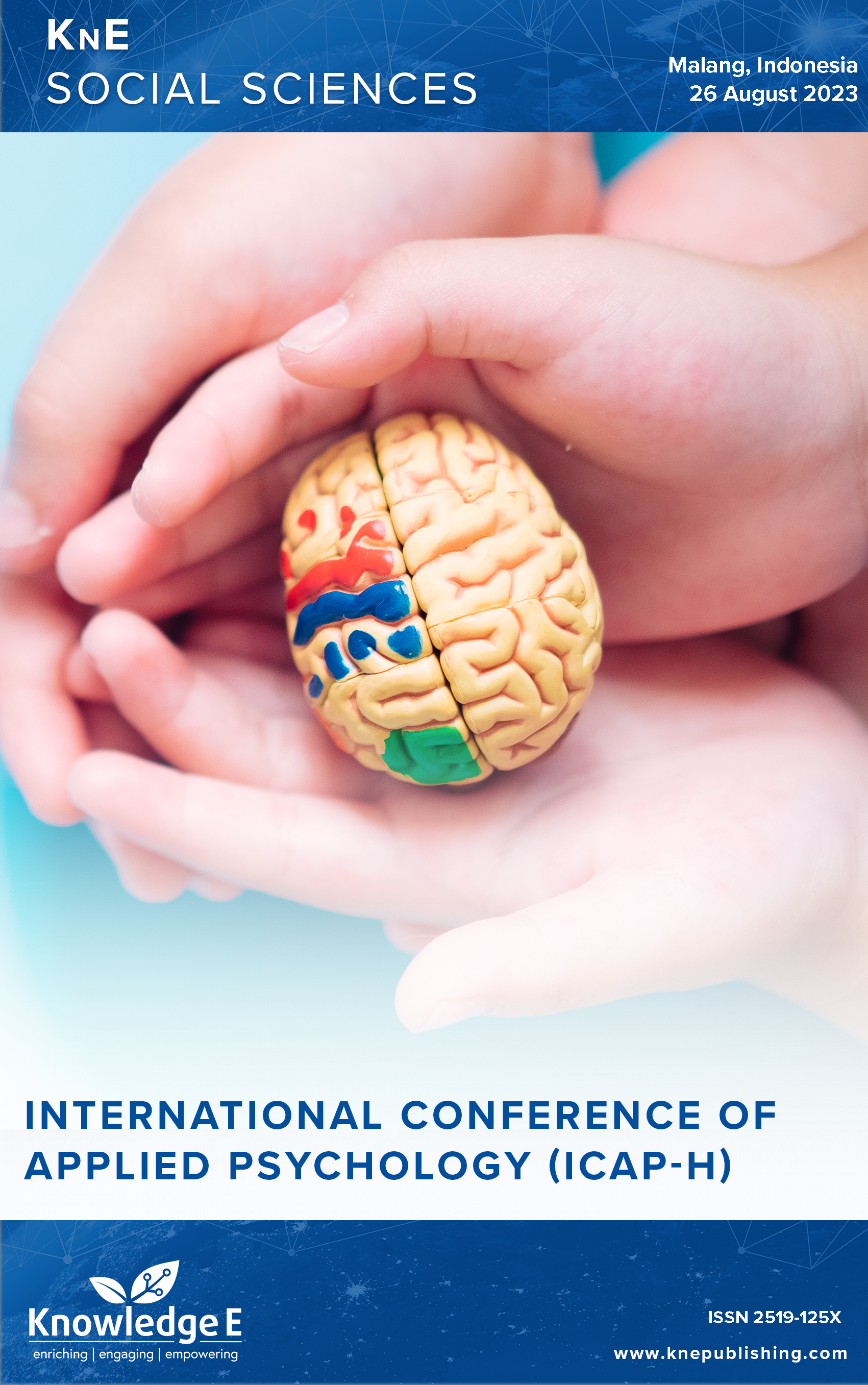Can Dating Violence Predict Feelings of Hatred Toward a Partner?
DOI:
https://doi.org/10.18502/kss.v9i5.15188Abstract
Dating violence can occur in unhealthy dating relationships. This study aims to determine when someone experiences dating violence and its impact on their feelings of hatred. The research method used is quantitative, with research subjects aged 20–30 years who have or are currently having dating experiences of violence in their relationship. The number of subjects in this study was 533, obtained by random sampling. The instruments used in this study were Conflict in Adolescent Dating Relationships Inventory (CADRI) and the triangular hate scale. The results obtained through simple and multiple linear regression tests showed that there was a significantly positive effect of dating violence on hatred. Of the total five aspects of dating violence, verbal and emotional violence were the highest compared to the other four aspects. This means that the hatred felt by individuals toward their partner can be caused by violence that has occurred, especially verbal and emotional violence.
Keywords: dating violence, hate, partner
References
Kamus Besar Bahasa Indonesia. [Online]. Available from: https://kbbi.kemdikbud.go.id/entri/benci
Alwisol. Psikologi kepribadian. Malang: UMM Press; 2016.
Ahinkorah BO, Dickson KS, Seidu AA. Women decision-making capacity and intimate partner violence among women in sub-Saharan Africa. Archives of Public Health. 2018;76(1):5. DOI: https://doi.org/10.1186/s13690-018-0253-9
Aumer K. Introduction to the psychology of love and hate in intimate relationships. In: The psychology of love and hate in intimate relationships. 2016.
Aumer-Ryan K, Hatfield E. The design of everyday hate: A qualitative and quantitative analysis. Interpersona: An International Journal of Personal Relationships. 2007;1(2):143–172. DOI: https://doi.org/10.5964/ijpr.v1i2.11
Aumer K, Bahn AC, Harris S. Through the looking glass, darkly: Perceptions of hate in interpersonal relationships. Journal of Relationships Research. 2015;6:1–7. DOI: https://doi.org/10.1017/jrr.2014.14
Aumer K, Bahn ACK, Janicki C, Guzman N, Pierson N, Strand SE, Totlund H. Can’t let it go: Hate in interpersonal relationships. Journal of Relationships Research. 2016;7(2010):1–9. DOI: https://doi.org/10.1017/jrr.2016.2
Aumer K, Bahn ACK. (2016). Hate in intimate relationships as a self-protective emotion. The psychology of love and hate in intimate relationships. Springer; 2016. DOI: https://doi.org/10.1007/978-3-319-39277-6
Berk LE. Development through the lifespan. 3rd ed. USA: Pearson Education, Inc.; 2004.
Boeree GC. Personality theories: Melacak kepribadian anda bersama psikolog dunia. Yogyakarta: Prismasophie; 2010.
Burger JM. Personality. USA: Wadsworth Thomson Learning; 2000.
Burris CT, Leitch R. Your pain, my gain: The interpersonal context of sadism. The Psychology of Love and Hate in Intimare Relationships, 85 – 103. Springer; 2016. 85–104 p. DOI: https://doi.org/10.1007/978-3-319-39277-6_6
Carney MM, Barner JR. Prevalence of partner abuse: rates of emotional abuse and control. Partner Abuse. 2012;3(3):286–335. DOI: https://doi.org/10.1891/1946-6560.3.3.286
Czyzowska D, Gurba E, Czyzowska N, Kalus A, Sitnik-Warchulska K, Izydorczyk B. Selected predictors of the sense of intimacy in relationships of young adults. International Journal of Environmental Research and Public Health. 2019;16(22):4447. DOI: https://doi.org/10.3390/ijerph16224447
Daher M. World report on violence and health. Journal Medical Libanais. 2003;51(2):59–63.
Dye HL. Is emotional abuse as harmful as physical and/or sexual abuse? Journal of Child & Adolescent Trauma. 2019;13(4):399–407. DOI: https://doi.org/10.1007/s40653-019-00292-y
Edwards KM, Palmer KM, Lindemann KG, Gidycz CA. Is the end really the end? Prevalence and correlates of college women’s intentions to return to an abusive relationship. Violence Against Women. 2018;24(2):207–222. DOI: https://doi.org/10.1177/1077801216686220
Fischer AH. Sex differences in emotionality: Fact or Stereotype? Feminism & Psychology. 1993;3(3):303–318. DOI: https://doi.org/10.1177/0959353593033002
Fermani A, Bongelli R, Canestrari C, Muzi M, Riccioni I, Burro R. Old wine in a new bottle. Depression and romantic relationships in Italian emerging adulthood: The moderating effect of gender. International Journal of Environmental Research and Public Health. 2020;17(11):1–16. DOI: https://doi.org/10.3390/ijerph17114121
Fletcher G, Simpson JA, Campbell L, Overall NC. The science of intimate relationships. UK: Blackwell Publishing; 2013.
Hickman LJ, Jaycox LH, Aronoff J. Dating violence among adolescents: Prevalence, gender distribution, and prevention program effectiveness. Trauma Violence Abuse. 2004;5(2):123–142. DOI: https://doi.org/10.1177/1524838003262332
Hill CT. Intimate relationships across cultures: A Comparative Study. New York: Cambridge University Press; 2019. https://doi.org/10.1017/9781108164832. DOI: https://doi.org/10.1017/9781108164832
Hocker JL, Wilmot WW. Interpersonal conflict. 10th ed. New York; 2017.

